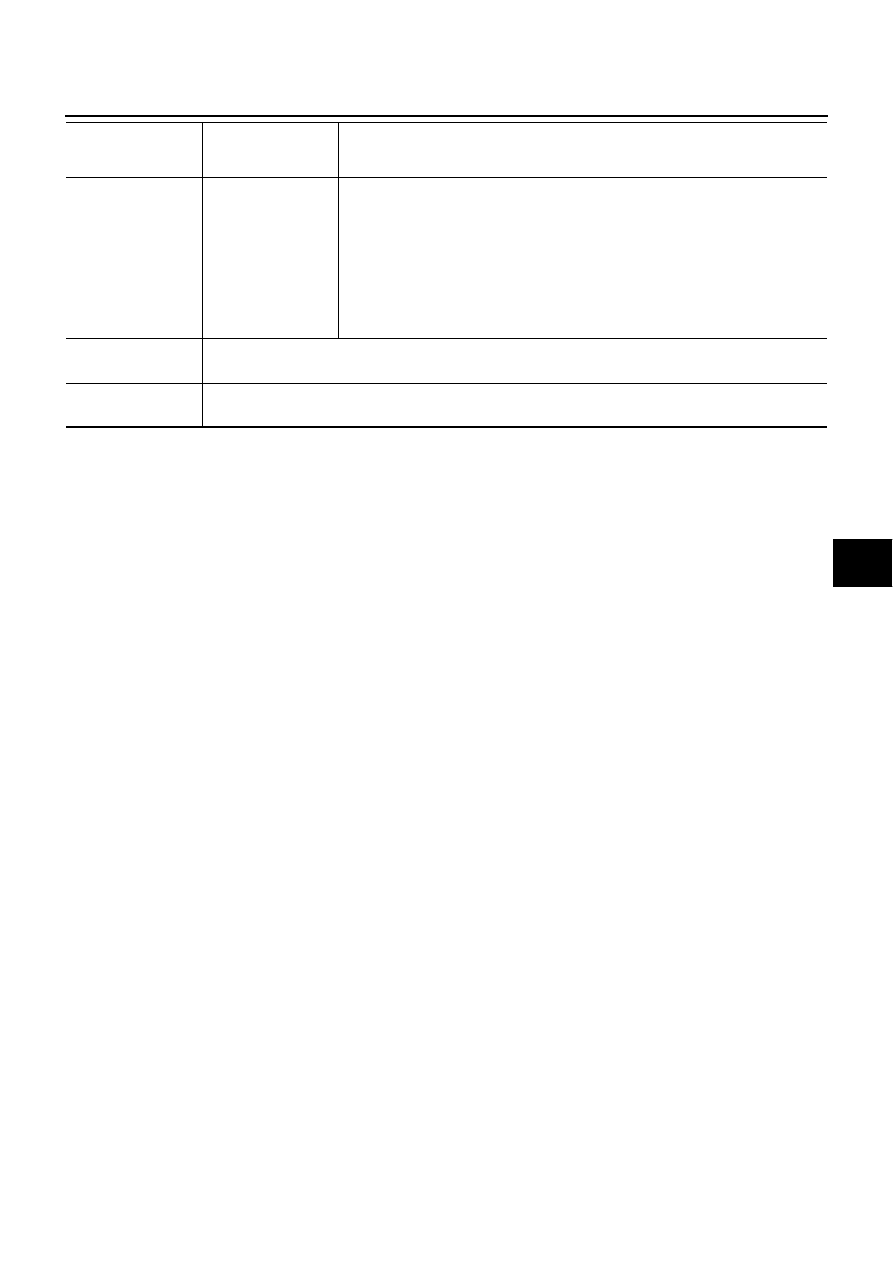Nissan Murano Z50 (2004 year). Manual - part 216

COLLISION DIAGNOSIS
SRS-61
C
D
E
F
G
I
J
K
L
M
A
B
SRS
Revision: 2004 November
2004 Murano
Seat with front side
air bag
REPLACE all parts of
front seatback
(including front seat-
back frame)
1. Visually check the seat on the collision side.
2. Remove the seat on the collision side and check the following for damage and
deformities.
–
Harness, connectors and terminals
–
Frame and recliner (for front and rear seat), and also adjuster and slides (for front
seat)
3. If no damage is found, reinstall the seat.
4. If damaged—REPLACE the damaged seat parts using new bolts.
Center inner pillar
1. Check the center inner pillar on the collision side for damage (dents, cracks, deformation).
2. If damaged—REPAIR the center inner pillar.
Trim/headlining
1. Check for visible signs of damage (dents, cracks, deformation) of the interior trim on the collision side.
2. If damaged—REPLACE the damaged trim parts.
Part
Front side air bag and
side curtain air bag is
activated
Front side air bag and side curtain air bag is NOT activated